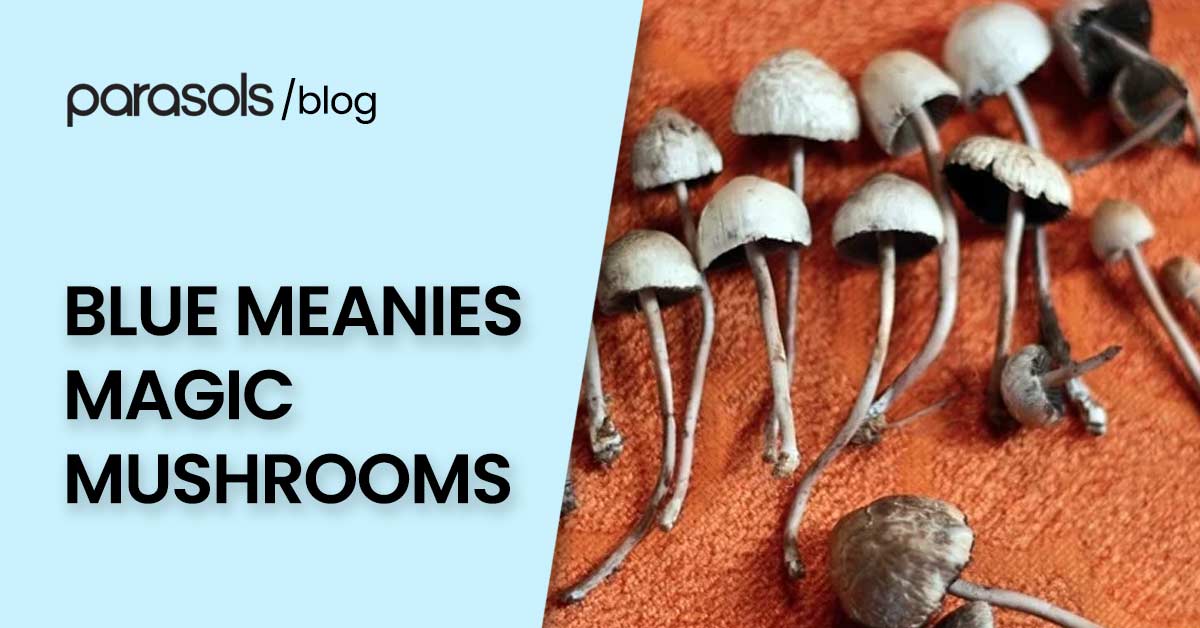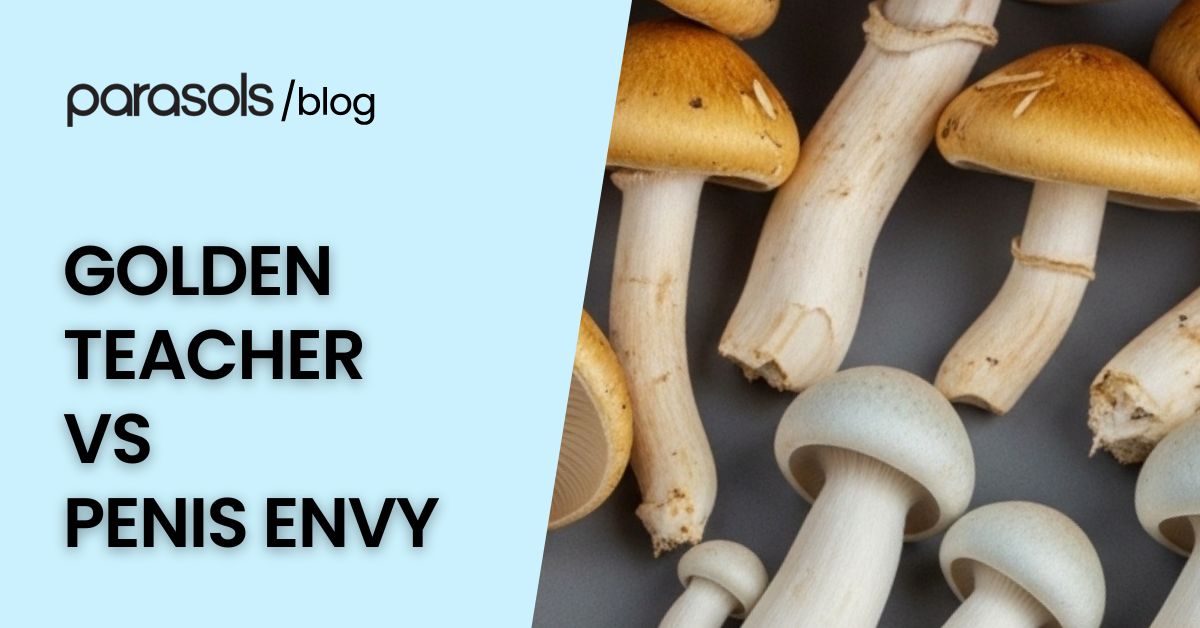Magic mushrooms, known for their psychoactive properties, have captivated human interest for centuries. Magic mushroom photos help identify what they are and if they are safe. Beyond their mind-altering effects, these fungi exhibit a fascinating array of forms, colors, and habitats. This blog inspects the visual and ecological diversity of notable Psilocybe species, highlighting their unique characteristics and the environments they inhabit.
Psilocybe azurescens: The Potent Coastal Dweller

Originating from the sandy dunes near Astoria, Oregon, Psilocybe azurescens is renowned for its high potency and striking blue bruising. This species thrives on driftwood and woody debris among beach grasses and has been successfully cultivated in outdoor chip beds, extending its presence to the Lower Mainland of British Columbia.
Psilocybe baeocystis: The Urban Transient

Once common in urban landscapes, particularly in areas mulched with conifer bark chips, Psilocybe baeocystis has seen a decline in developed settings since the 1980s. It still appears in suburban interfaces adjacent to forests or agricultural lands. This potent species is notable for its dark blue staining upon bruising.
Psilocybe cyanescens: The Wavy Cap Enthusiast

Commonly known as "Wavy Caps," Psilocybe cyanescens favors recently landscaped areas with woodchip mulches, especially those containing alder chips. Stable populations can also be found in clearings overgrown with alder trees and brambles. Get Magic Mushrooms
Psilocybe cyanofibrillosa: The Floodplain Rarity

Also known as the "Rhododendron Psilocybe," this rare species is found in the tangled roots of shrubs and trees along flood zones of wild mountain rivers. Occasionally, it appears in landscaped areas with woodchip mulches.
Psilocybe fimetaria: The Pasture Resident

Native to Europe, Psilocybe fimetaria occasionally appears in grassy fields and grazed pastures in the Lower Mainland. It resembles Psilocybe stuntzii, featuring a membranous ring on its stem.
Psilocybe pelliculosa: The Forest Trail Companion

These small brown mushrooms grow in conifer debris along trails and logging roads in second-growth forests. They may also be found in landscaped areas with conifer mulch. Due to their low potency and resemblance to potentially poisonous species, consumption is not recommended.
Psilocybe semilanceata: The Iconic Liberty Cap

Known as the "Liberty Cap," Psilocybe semilanceata is a classic magic mushroom found in wet pastures and lawns, particularly in coastal areas. It grows from dead grass roots and is considered user-friendly among enthusiasts.
Psilocybe stuntzii: The Urban Look-Alike

Common in urban and suburban landscapes, Psilocybe stuntzii often grows in newly established lawns and plantings with woodchip mulch. It is low in potency and closely resembles some deadly Galerina species, making identification crucial.
Psilocybe subfimetaria: The Liberty Cap's Cousin

Resembling the Liberty Cap but lacking its distinctive pointed cap, Psilocybe subfimetaria features a heavy zone of veil fibrils around the stem. First discovered in Vancouver in 1976, it also grows in Washington and Oregon.
Conclusion
The world of magic mushrooms is vast and diverse, with each species offering unique visual and ecological characteristics. Understanding these differences is crucial for enthusiasts and researchers alike. Always exercise caution and consult experts when identifying or considering the use of wild mushrooms.
Magic Mushroom Photos – FAQs
1. What are magic mushrooms?
Magic mushrooms are naturally occurring fungi that contain psychoactive compounds, primarily psilocybin and psilocin. These compounds can induce altered states of consciousness, hallucinations, and spiritual experiences.
2. Are all mushrooms shown in this blog psychedelic?
No. While most of the mushrooms discussed belong to the Psilocybe genus and are psychoactive, some like Conocybe cyanopus and Gymnopilus aeruginosus can be dangerous or bitter, and Psilocybe stuntzii is weak in potency. Correct identification is crucial, as some species resemble toxic look-alikes.
3. Which species are considered the most potent?
Among those listed:
- Psilocybe azurescens is known as one of the most potent psilocybin-containing mushrooms in the world.
- Psilocybe cyanescens and Psilocybe baeocystis are also highly potent.
- Psilocybe semilanceata (Liberty Cap) is potent and widely used for its balanced effects.
4. Where can I find these mushrooms?
- Psilocybe azurescens: Pacific Northwest, especially Oregon coastal sand dunes.
- Psilocybe cyanescens: Landscaped areas with woodchips, especially alder.
- Psilocybe semilanceata: Wet pastures, lawns, and playing fields.
- Psilocybe baeocystis: Previously common in urban mulched areas.
- Other species occur in very specific environments like floodplains, coniferous forests, and pastures.
5. Can I legally pick magic mushrooms?
That depends entirely on local laws and regulations. In many countries and U.S. states, possession or harvesting of psilocybin mushrooms is illegal. Some regions are moving toward decriminalization, but laws vary.
Always check your local regulations before collecting or consuming wild mushrooms.
6. What do the blue stains mean?
Blue bruising on mushroom caps or stems is often a sign of psilocybin oxidation, indicating the presence of psychoactive compounds. However, not all blue-staining mushrooms are safe or psychoactive—some toxic species can also bruise blue.
7. Can I grow Psilocybe mushrooms at home?
Some species like Psilocybe azurescens can be cultivated outdoors in woodchip beds in suitable climates. Home cultivation is still subject to legal restrictions in most regions. Always ensure your cultivation efforts are legal in your jurisdiction.
8. Are there poisonous look-alikes to watch for?
Yes. Dangerous mushrooms like Galerina marginata resemble species like Psilocybe stuntzii. Ingesting a toxic look-alike can be deadly. Never consume wild mushrooms unless you are an expert or have consulted one.
9. What is the safest way to identify mushrooms?
- Use multiple identification features: cap shape, spore print, bruising reaction, habitat, season.
- Take clear photos and consult a reputable field guide.
- Join a local mycological society or online community.
- When in doubt, do not consume.
10. Do the mushrooms change appearance as they age?
Yes. Many Psilocybes change color, become slimy, or develop deep bruising as they age. Caps may flatten, and gills darken. This can make identification harder—fresh specimens are best for accurate ID and photos.
11. Are photos enough for identification?
No. While photos are helpful, they should be supplemented with:
- Spore prints
- Notes on bruising reactions
- Habitat descriptions
- Smell and texture (if safe to handle)
12. Is there a difference between Psilocybe semilanceata and Psilocybe subfimetaria?
Yes. While they are similar in appearance and habitat, Psilocybe semilanceata has a distinctive pointy cap (nipple-like), while Psilocybe subfimetaria lacks this feature and shows heavy veil remnants on the stem.
13. Can I use magic mushroom photos for educational purposes?
Absolutely. Properly attributed mushroom photos are valuable for:
- Scientific study
- Foraging safety
- Public education
- Mycological records
Always give credit to photographers and sources when reusing images.
14. What’s the safest way to start learning mushroom identification?
- Start with non-toxic, easily recognizable species.
- Use field guides, attend mushroom forays, or consult local experts.
- Take detailed notes and photos of habitat, gills, bruising, cap, and stem.
- Never consume any wild mushroom unless confirmed safe by an expert.
15. Why do some magic mushrooms grow in woodchips or pastures?
Different Psilocybe species have adapted to unique ecological niches:
- Woodlovers (like P. azurescens, P. cyanescens) decompose woody debris.
- Grassland species (P. semilanceata, P. subfimetaria) thrive on decomposed grass roots.
- Some appear in landscaped urban areas rich in organic mulch or compost.



Leave a comment
All comments are moderated before being published.
This site is protected by hCaptcha and the hCaptcha Privacy Policy and Terms of Service apply.